
May 6, 2022 | Daily Space, Neutron Stars / Pulsars, Science, Sky Watching, Supermassive Black Holes, The Sun
The flash of a pulsar about 3,000 light-years from our solar system was caused by a ‘black widow’ binary consuming a smaller star. Intriguingly, a third companion star is orbiting the pair, which may have originated near the Milky Way’s center. Plus, the Sun is ramping up, Chandra releases more sonification videos, and this week’s What’s Up is all about occultations.
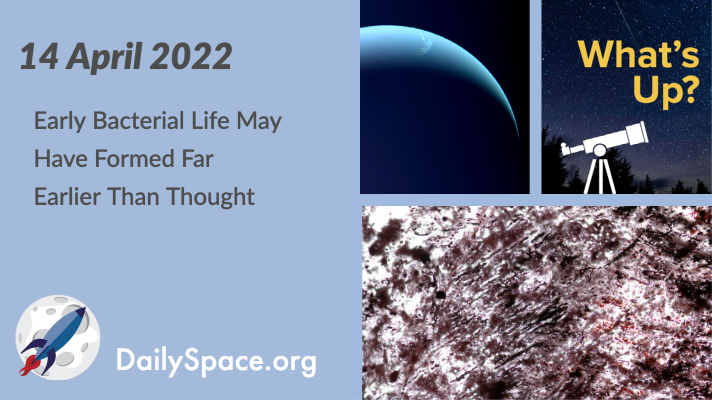
Apr 15, 2022 | Asteroids, Astrobiology, Comets, Crewed Space, Daily Space, Earth, Galaxies, JWST, Lucy, Mars, Mercury, Moon, Neptune, Saturn, Sky Watching, Stars, Supermassive Black Holes, Venus
An analysis of microscopic features in rocks from the Nuvvuagittuq Supracrustal Belt in Quebec, Canada, which date back between 3.75 and 4.28 billion years, finds evidence of possible microbial life. Plus, a supermassive black hole precursor, temperatures on Neptune, check-ins with various spacecraft, and our weekly What’s Up segment.
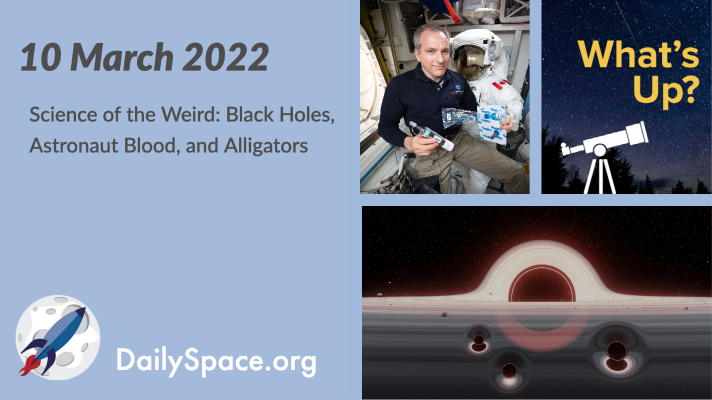
Mar 11, 2022 | Active Galaxies, Crewed Space, Daily Space, Earth, Sky Watching, Stars, Supermassive Black Holes, The Sun
Today’s science stories run the gamut of the strange and the weird, with several black holes, the effects of space on astronaut blood cells, and how alligator mating dances added to solar science. Plus, this week’s What’s Up helps you choose binoculars for sky gazing.
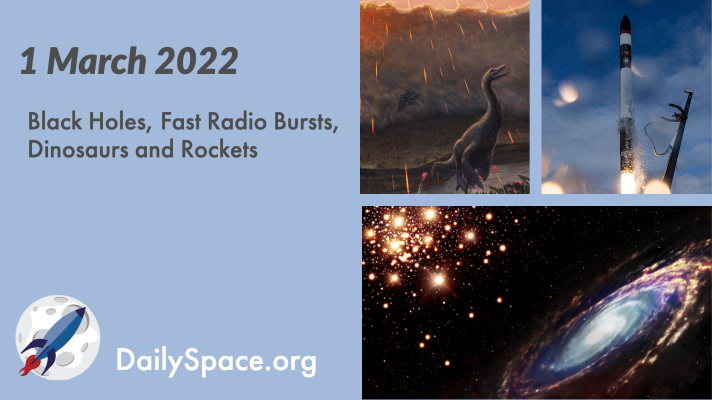
Mar 2, 2022 | Asteroids, Black Holes (Stellar), Crewed Space, Daily Space, Earth, Fast Radio Bursts, Neutron Stars / Pulsars, Rocket Lab, Rockets, Space China, SpaceX, Starlink, Supermassive Black Holes
As we return from our mini-break, we bring you some highlights of stories that happened while we were away, including black holes spiraling toward each other, the possible origin of a fast radio burst, and more information on the demise of the dinosaurs. Plus, Erik Madaus brings us updates on quite a few rocket launches.
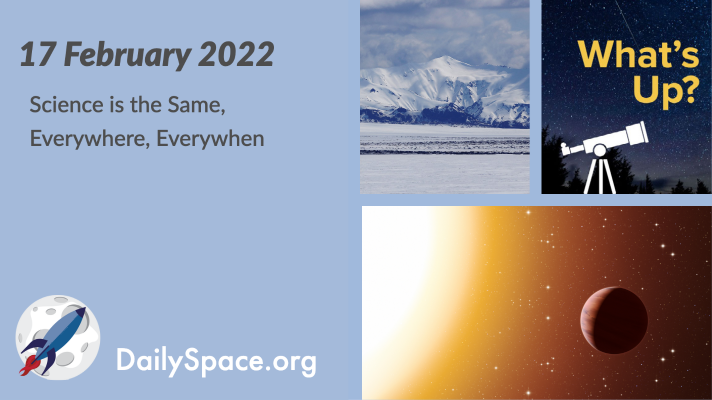
Feb 18, 2022 | Climate Change, Daily Space, Earth, Exoplanets, Galaxies, Sky Watching, Stars, Supermassive Black Holes
Today, we bring you stories proving that we do understand some things, like black holes, and that we have forgotten other things, like that the Earth’s crust can sag under the weight of ice. It’s all a lot more complicated than we like to think. But it sure is pretty, and when the science makes your head hurt, our What’s Up segment will fill your eyes with some beauty.
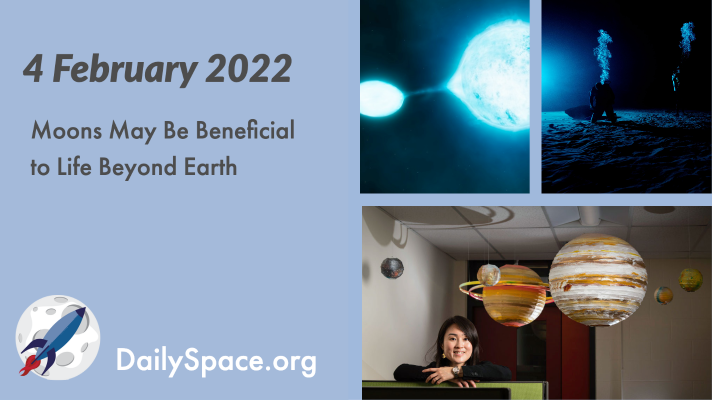
Feb 5, 2022 | Astrobiology, Crewed Space, Daily Space, Exoplanets, Moon, Rockets, Sky Watching, Spacecraft, SpaceX, Starlink, Stars, Supermassive Black Holes, Uranus
New simulations find that to form a moon with a similar size ratio to our own system, certain types of planets are needed. And that type of moon-planet system could then be beneficial to the rise of life on the planet. Plus, a Starlink launch, puffy planets, and training astronauts underwater for spacewalks.








 We record most shows live, on Twitch. Follow us today to get alerts when we go live.
We record most shows live, on Twitch. Follow us today to get alerts when we go live.